
 Welcome to “Up Close and Personal.” For every interview I will be introducing a literary personality discussing their views and insights, as well as upcoming literary events around the world.
Welcome to “Up Close and Personal.” For every interview I will be introducing a literary personality discussing their views and insights, as well as upcoming literary events around the world.Today’s interview is with Ellen Booraem. She spent thirty years as a journalist, including ten years as the managing editor and award-winning writer for The Weekly Packet, a tiny weekly newspaper in Blue Hill, Maine.
After a three-year stint as managing editor of The Packet’s parent chain, she continued to win awards as arts and special sections editor for The Ellsworth American, the highly regarded county weekly. She served in that post for six years and continues to work for The American as a freelance reporter and reviewer.
She is a member of the Class of 2k8 with her debut novel THE UNNAMEABLES (Houghton Mifflin Harcourt, was published October 2008). Her second novel, tentatively entitled Small Persons With Wings, will be published by Dial Books in 2011.
A native of Massachusetts and a graduate of Wheaton College, Ms. Booraem lives with her cat, a dog and with Robert Shillady who's a painter in the coastal Maine, town of Brooklin population 900, where they built a house with their own hands.
She blogs in a halting and sporadic way at http://ellenbooraem.blogspot.com/
E.I. Would you share some early insight into who you were as a teenager? What were you like? Please tell us more about Ellen Booraem -- the woman behind the former journalist, managing editor, award-winning writer and now an author?
E.B I was a hybrid: a bookworm/literary magazine geek who also was a baton-twirler. (How embarrassing.) The city newspaper gave me a column, writing about high school stuff, but I remember it as being pretty brainless. The editor was so demoralized I don’t think he replaced me after I graduated. My father (a former reporter) told me I didn’t have a nose for news and he was right…it took me years to develop one.
E.I. What is it about the art form of writing that enchants you the most?
E.B. Writing doesn’t enchant me much. It’s become more of an addiction—if I go for several days without writing anything I get ill-tempered, and eventually I stop being able to sleep nights. I enjoy developing the characters and doing the research, and revising the first draft. Revision usually is more fun than drafting, which can be scary unless you keep reassuring yourself that you can fix everything when you revise. I do love fixing things.
E.I. Many writers describe themselves as "character" or "plot" writers. Which are you? And what do you find to be the hardest part of writing?
E.B I’m definitely a character writer, and developing a plot is the hardest thing for me. When I get stuck, the characters get me out of trouble: I write character descriptions, explore what makes them tick, or write journal entries in their voices, and eventually all becomes clear. Or clearer, anyway.
E.I. How do you imagine the audience when you are writing? Do you have sheets of newsprint covered in a story boards all over your walls?
E.B My audience is me. Possibly me at age 12, but there’s not much difference. I write reams of notes to myself, many of them on my computer, others scribbled on scrap paper and pinned to a bulletin board or floating around on my desk. No sheets of newsprint or story boards—my office is way too small for that. It’s always a mess, too.
E.I. What was your biggest challenge in writing “The Unnameables”? How did you decide what level of details your reader will accept? Did you work them out in advance, or did they evolve as you wrote the story? How did you overcome these challenges?
E.B My biggest challenge in THE UNNAMEABLES was making it clear to myself how main character Medford’s journey related to the chaotic Goatman’s, or vice versa. My editor, Kathy Dawson (then at Houghton Mifflin Harcourt, now at Dial Books for Young Readers), was a huge help, because she’s adept at asking the right questions to bring out what’s stuck under a brain cell someplace. The answers always turn out to be in your noggin—my goal is to learn how to find them myself without making Kathy do so much work. I think I’m getting better at it.
The details seem to bubble up as a I go along, and usually I think them up to entertain myself. I know I have too many if I get bored when I’m reading a chapter aloud to my writer’s group.
E.I. In “The Unnameables”, How much of Medford Runyuin is planned out in your head? How do you know where you will go next with your story?
E.B I knew Medford very well from page one, because I did a lot of thinking about his character and his problem before I started writing. I knew how the book would end, but had no idea how I’d get there. I would plan out a couple of chapters in advance but no more than that, and even then I got ambushed by events. One surprise was when Medford’s friend Prudy met the Goatman—I expected her to react one way, and discovered a couple of sentences beforehand that her reaction would be the opposite of what I’d expected.
E.I. If you were asked to read a page from “The Unnameables” is there one that you would personally select to share with your fans? And why?
E.B When I’ve done readings, I’ve assumed that no one has read the book and have tried not to give anything away. With those parameters, my choice would have to be when Medford first meets the Goatman—the Goatman has to be involved, because I like the way he kicks Medford off balance.
E.I How do you weave so many unusual elements of fantasy and information into your stories and yet you keep them so fast-paced?
E.B Details of fictional worlds come easily to me, possibly because I’ve spent so much of my life daydreaming. Pacing is a real problem, also something Kathy Dawson’s been trying to help me fix. My characters have a nasty tendency to sit around and talk when they should be up and doing. Again, I hope I’m improving with experience.
E.I. What did you find to be the hardest part of writing the book? What was your biggest challenge in developing the characters, “The Goatman” and Boyce? Did you work them out in advance, or did they evolve as you wrote the story? How did you overcome these challenges?
E.B Both Medford and the Goatman existed as visual characters before I got my hands on them. My partner Rob Shillady is a painter, and he’d made pictures years before that included a guy named Medford Runyuin and his side-kick, the Goatman. After he let me appropriate them, I changed them according to my needs: Medford got younger, stopped being Rob, and became a lot more like me, while the Goatman acquired hooves, a staff, and the ability to call the wind but not control it. I had a pretty good idea what the Goatman’s personality was like from the get-go—as I said above, the hard part was integrating him into Medford’s situation. Boyce came into my head as a whole person, too, although I had to work to understand why he treated Medford the way he did. I wrote myself notes about him, and a journal entry in his voice, and all that helped. And of course you do learn more about characters when you see them in action.
E.I. You are well known in the writing community as the former journalist and the award-winning writer. Do you sometimes ever feel pressure or insecure, or are you able to separate all that from your own creative process?
E.B Actually, I’m not that well known, which keeps the pressure off for the most part. I regularly feel insecure, but I’m used to feeling that way so it doesn’t inconvenience me much. When necessary, I get reassurance from my partner (who understands because he’s a painter, which if anything is worse than being a writer), from my writer’s group, and from my agent, Kate Schafer Testerman. Also from Anne Lamott’s BIRD BY BIRD, the single most encouraging “craft” book I’ve ever read, although Stephen King’s is pretty good, too.
E.I. Ms. Booraem, Thank you for contributing to my blog. It has been a pleasure for me to get to know your work a little better. Would you like to end your interview with a writing tip or advice for young aspiring writers?
E.B A Cape Cod friend of mine once accosted Kurt Vonnegut for writing advice, and he said, “Apply the seat of your pants to the seat of the chair.” That’s pretty much it. Schedule writing time every single day, and if you get “writer’s block,” write notes to yourself about your characters or the setting or what you had for breakfast until it goes away. Don’t feed yourself stories about why you can’t write today or how stupid it was to think you could write at all—everybody has those stories, and they’re hardly ever true.
Thanks for interviewing me—your questions were fun to think about. And good luck with the blog!
Photo of Ellen Booraem by Sherry Streeter
To learn more about Ellen Booraem please visit her web site
To purchase her book, please visit AMAZON and Barnes and Noble

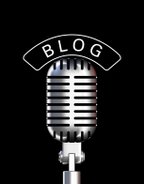





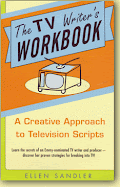



.png)



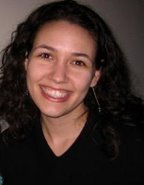
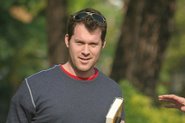

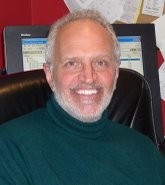
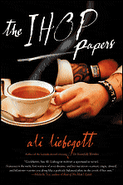

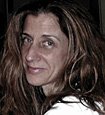
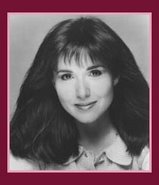






1 comment:
What you say about the different types of books is very true. I just released a teen novel, Angela 1: Starting Over (the first in a series of three, set in coastal Texas). I opted for teen readers so I would have (ironically) the freedom to write what I wanted. To learn more, just click on my name and follow the link to my website. I also invite you to read my blog at www.davidabedford.aegauthorblogs.com. Thanks!
Post a Comment